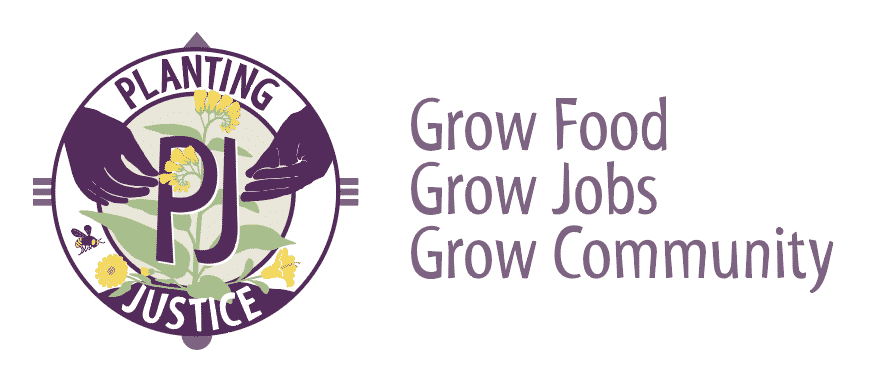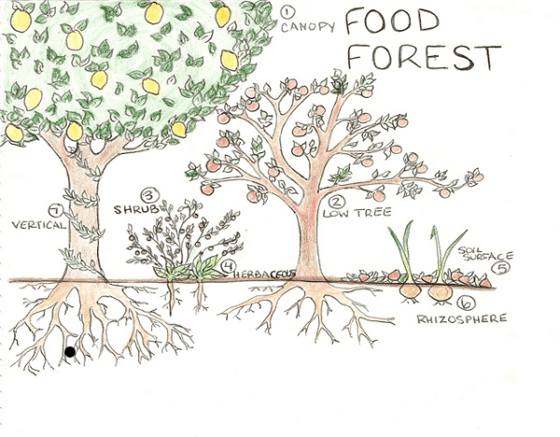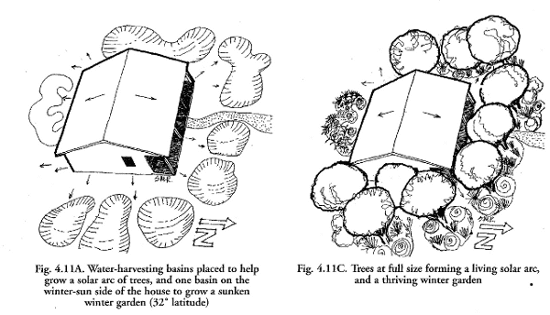CONSTRUCTING A FOOD FOREST
1) Tall-Tree Layer: overstory of full-sized fruit, nut, or other useful trees, with lots of space between each tree to let in plenty of light (15-30 feet). Examples include standard size fruit trees such as apple and pear, full-sized cherries, walnut, Chinese chestnut, pinon pines, carob. Often there is not enough room in a single-family urban plot for these varieties.
2) Low-Tree Layer: many of the same trees as the tall-tree layer, but dwarf or semi-dwarf varieties: apple, pear, plum, apricot, peach, nectarine, almond, mulberry, persimmon, citrus
3) Shrub Layer: includes fruiting, wild-life attracting, and other useful shrubs. Blueberries, raspberries, rose, hazelnut, butterfly bush, goumi berry, gooseberry, currants, etc.
4) Herb Layer: non-woody vegetation: perennial vegetables, flowers, culinary herbs, mulch plants. Examples are artichoke, comfrey, rhubarb, yarrow, dill, fennel, lavender, alfalfa, fava beans,
5) Vine Layer: climbing plants that go up tree trunks and branches, filling the unused regions of the shrub layer with food. Examples include kiwi, grapes, passionflower, vining berries, and climbing annuals such as squash, cucumbers, and melons
6) Ground Cover Layer: low, ground-hugging plants such as strawberries, nasturtium, clover, creeeping thyme, German chamomile, and natives such as Oregon grape and spreading ceonothus
7) Root layer: garlic, onions, potatoes, camass, Jerusalem artichokes, daikon radishes, dandelion
8) Edible Mushrooms: logs of shitakes and maitakes, oyster mushrooms growing on mulch
Here is a diagram from Brad Lancaster’s wonderful book, Rainwater Harvesting for Drylands, Volume 1 (This book is essential reading, get it here). Notice the basins dug to direct surface and roof runoff into the food forest. This diagram assumes a site in the northern hemisphere, where the sun is always in the southern sky to the SW and SE. The South is open to maximize the sun, but the East and West are shaded to cool the home in the heat of the day.



0 Comments